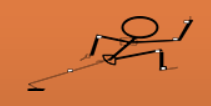Tendon Rehab Physio
Is it tendiopathy, tendonitis, tendinosis, or even bursitis?
Some say po-tay-to, some say po-tar-toe. Briefly, tendon irritations start with overload or weakness - they are the same and can drive a bursitis.
Tendonitis (or tendinitis, both mean the same thing) is one of the primary complaints we see in clinic. Whether its Achilles, greater trochanteric (hip), quadriceps, tennis elbow, golfers elbow, rotator cuff or any other tendon, all tendon pains require a rehab program targeted at strengthening the problematic tendon and, more importantly, its supportive muscle.
Many tendons have an associated bursa (bursae if plural) that reduces the friction of the tendon as it rubs over the nearby bone and other connective tissue. Due to the proximity between the bursa and tendon, the bursa often becomes inflamed along with the tendon. Examples include retrocalcaneal bursitis with Achilles teninopathy, and greater trochanteric bursitis with gluteus medius/minimus tendinopathy. This bursitis is reversed when the tendon is happy and healthy.
Overload or under-load?
Tendon pain is always caused by overloading or under-loading the tendon.
Fit and active people generally fall into the overload camp, doing too much, too soon. These people work their tendons too hard by ramping up their training faster than the tendons can adapt. If not in training, people can also get these through physical work like using drills and screwdrivers.
This results in an inflamed tendon, which is the bodies way of telling you that you need some time to rest to let the tendon adapt. These people will usually require a period of reduce load/rest to allow their tendons to catch up. Strength is often lacking in these people too, so strengthening program will help them get back on track.
Sedentary people generally fall into the under-load camp. These people get tendon pain through weak muscles which upsets the tendon. These are generally very easy to treat and will respond very well to a targeted strengthening program.
Either way, load and the load capacity of the muscle is at fault. If you’re fit an have a tendinopathy, the muscle doesn’t have enough capacity for your high demands. If you’re sedentary and weak, the muscle doesn’t have enough capacity for your low demands.
Once a tendon, always a tendon
Tendons are tricky and persistent injuries. Once they have occurred, they will likely reoccur. We can combat this with a maintenance program that keeps things humming along nicely. Once your tendon pain is mostly resolved, your final physio visit will give you a program to continue with FOREVER. This is an exercise that you do once a week to keep the tendon happy and you pain free.
How can Physiotherapy help tendon pain?
Short term relief through taping or exercises for analgesia (pain relief).
Advice and education on what the cause of your pain is and how we can make it better.
Tendon rehabilitation exercises. We will give you some homework to do that strengthens the muscle associated with the tendon. One or two exercises usually does the trick. Strong muscle = happy tendon = happy bursa. Ta da!
…Do I need an injection for bursitis?
Maybe… but let’s try some Physiotherapy first.
Corticosteroid injections are referred for by GPs when patients have evidence of bursitis on ultrasound. These injections have varying effects on patients, some get no relief, some get complete relief but only for a day or two, some are better for a few weeks. Studies suggest that patients are generally no better off at 3-6 months post injection. If you get no relief, the diagnosis may be wrong…
These jabs are good for calming inflammation down for a period of time, but without exercise to rehabilitate the tendon, the injection is unlikely to have lasting effects. If you want to avoid a jab, come see us first!
Common Tendon Complaints
The most common tendon complaint we have is hip pain. Greater trochanteric pain syndrome (GTPS) is very common, especially in women over the age of 40. Patients usually complain that they can’t sleep on their side, they can’t walk for long and may have a limp after getting out of bed or after sitting for a while.
Shoulder pain with supraspinatis tendinopathy and subacromial bursitis. These patients complain of shoulder pain, especially overhead. They will have a “painful arc” in which pain comes and goes through range and will have positive impingement tests.
The Achilles heel. Achilles pain is common, especially in runners. These often warm up with movements and are worse after activity.
